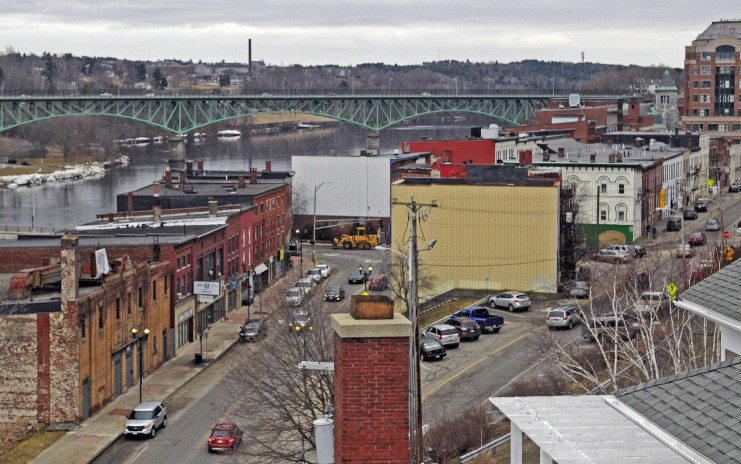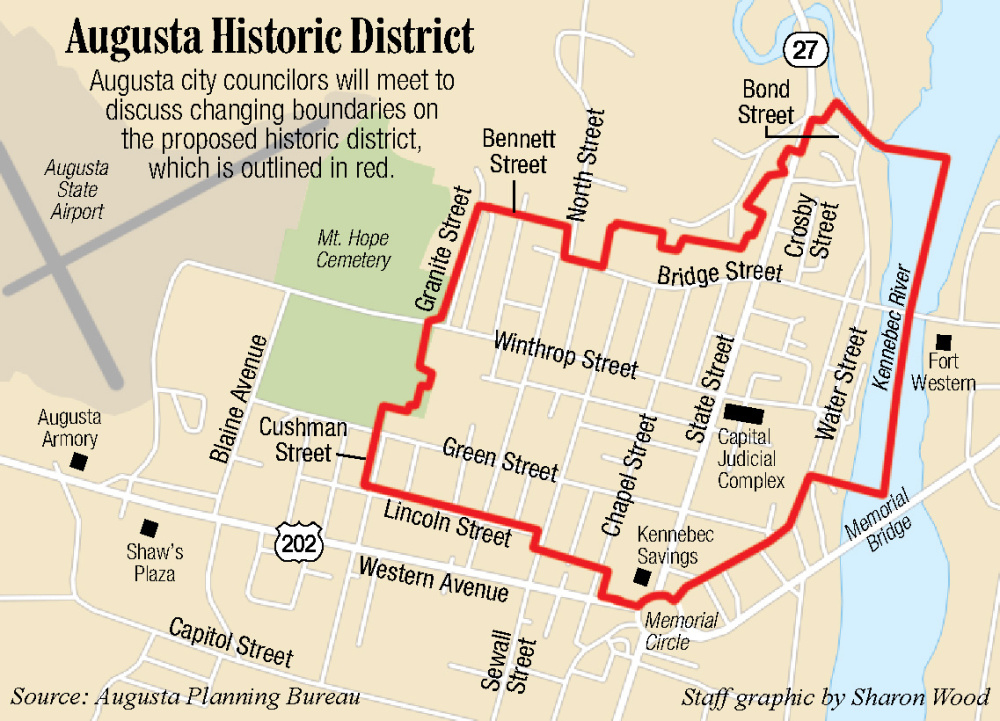AUGUSTA — The city’s proposed new historic district probably contains too many not-so-historic properties within its boundaries to meet federal Department of the Interior standards, according to state and city officials.
The district as proposed includes much of Augusta’s west side, including the downtown area and residential neighborhoods.
In a recent meeting with Christi Mitchell, assistant director of the Maine Historic Preservation Commission, city officials learned the city’s proposed district may not meet Department of the Interior standards required for redevelopment projects within the district to be eligible for state and local historic preservation tax credits.
Rollins and Mitchell said the current boundaries of the proposed historic preservation district include too many properties, particularly on its boundary lines, that are not considered to have historic value.
“If the city’s intent is to have a local district (that qualifies for state and federal tax credits), they’d need to revise the district boundaries to be more in conformance with national historic preservation standards,” Mitchell said. The national historic register guidelines do “not support having noncontributing properties on the edge of the district.”
She said historic districts are generally made up of groupings of historic buildings, united by a time period or other historical significance. She said that concentration of buildings make up the district, not the buildings that happen to be surrounding them.
“We kind of put the cart before the horse, processwise,” Rollins said. “Part of what (state historic preservation officials) are concerned about is, are the district boundaries defendable? As we first contemplated them, they’re not defendable, if we want to be a Certified Local Government.”
With that in mind, city administrators and Rollins plan to propose at Thursday’s City Council meeting that the city move ahead with plans to adopt the proposed Historic District Ordinance and the historic preservation standards it contains, but remove the currently proposed district boundaries from it.
A new committee, the Augusta Historic District Review Board, which would be created as part of the ordinance, then would determine district boundaries with the help of a consultant and the city staff and eventually propose new boundaries.
Councilors are scheduled to discuss the issue in their meeting at 6:30 p.m. in council chambers at Augusta City Center.
The current proposed historic district includes the downtown Water Street area north until just beyond Bond Street, extending as far south as a small portion of Western Avenue at Memorial Circle, and includes homes and other buildings along parts of State, Green, Bridge, Chapel, Melville, South Chestnut, North Chestnut, Spring, Winter and Summer streets.
“With regards to the West Side Neighborhood, the newly created Augusta Historic District Review Board will work with a consultant to identify boundaries that meet Department of the Interior standards using the surveys completed by the state as a base to update,” Nazar wrote in a memo to city councilors and City Manager William Bridgeo. “The board will engage the neighborhood and propose boundaries to the council.”
The city also could move ahead immediately with a process Rollins said began about a year ago, to have the downtown area along Water Street designated a National Historic District.
Nazar said a National Historic District could be created downtown by midsummer and would make historic commercial buildings there eligible for state and federal tax credits, which can pay for up to 40 percent of the cost of redevelopment projects that meet historic preservation standards.
Separating the process of having the downtown designated a National Historic District from the likely-to-be-contested approval of the Historic District Ordinance, which has been criticized by some councilors and residents of the district as an infringement on private property rights, could allow downtown building owners to seek historic development tax credits sooner.
Nazar said the to-be-created Augusta Historic District Review Board could, if councilors approve of the altered approach, spend the summer working with the staff and a consultant to ensure the proposed new district boundaries qualify the city to become a Certified Local Government.
Three areas within the previously proposed district boundaries already are designated as National Historic Districts, so those areas, at least, should already qualify under federal historic standards. They include neighborhoods centered on Winthrop Street, Crosby Street and Bond Street.
Keith Edwards — 621-5647
Twitter: @kedwardskj
Send questions/comments to the editors.





Success. Please wait for the page to reload. If the page does not reload within 5 seconds, please refresh the page.
Enter your email and password to access comments.
Hi, to comment on stories you must . This profile is in addition to your subscription and website login.
Already have a commenting profile? .
Invalid username/password.
Please check your email to confirm and complete your registration.
Only subscribers are eligible to post comments. Please subscribe or login first for digital access. Here’s why.
Use the form below to reset your password. When you've submitted your account email, we will send an email with a reset code.